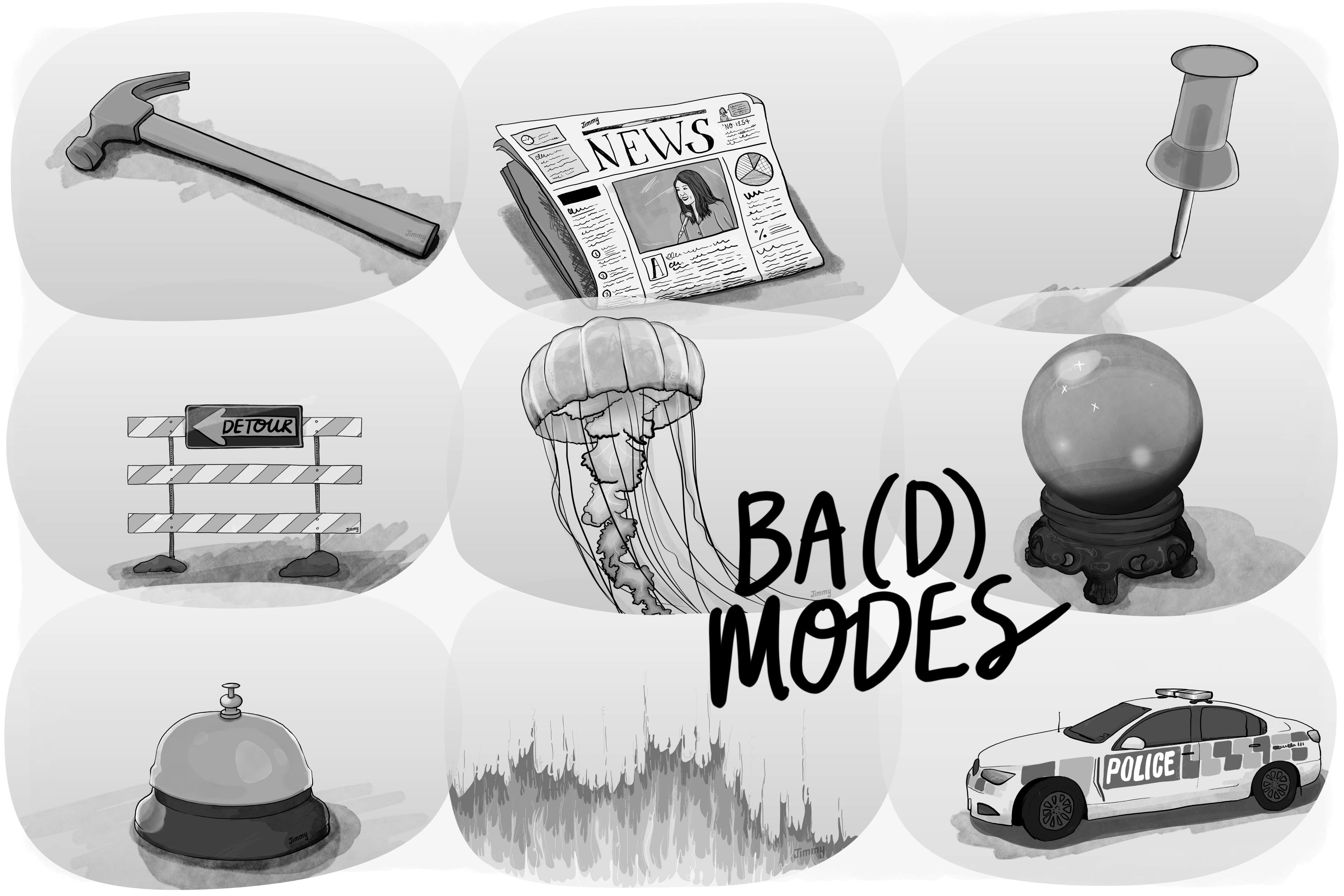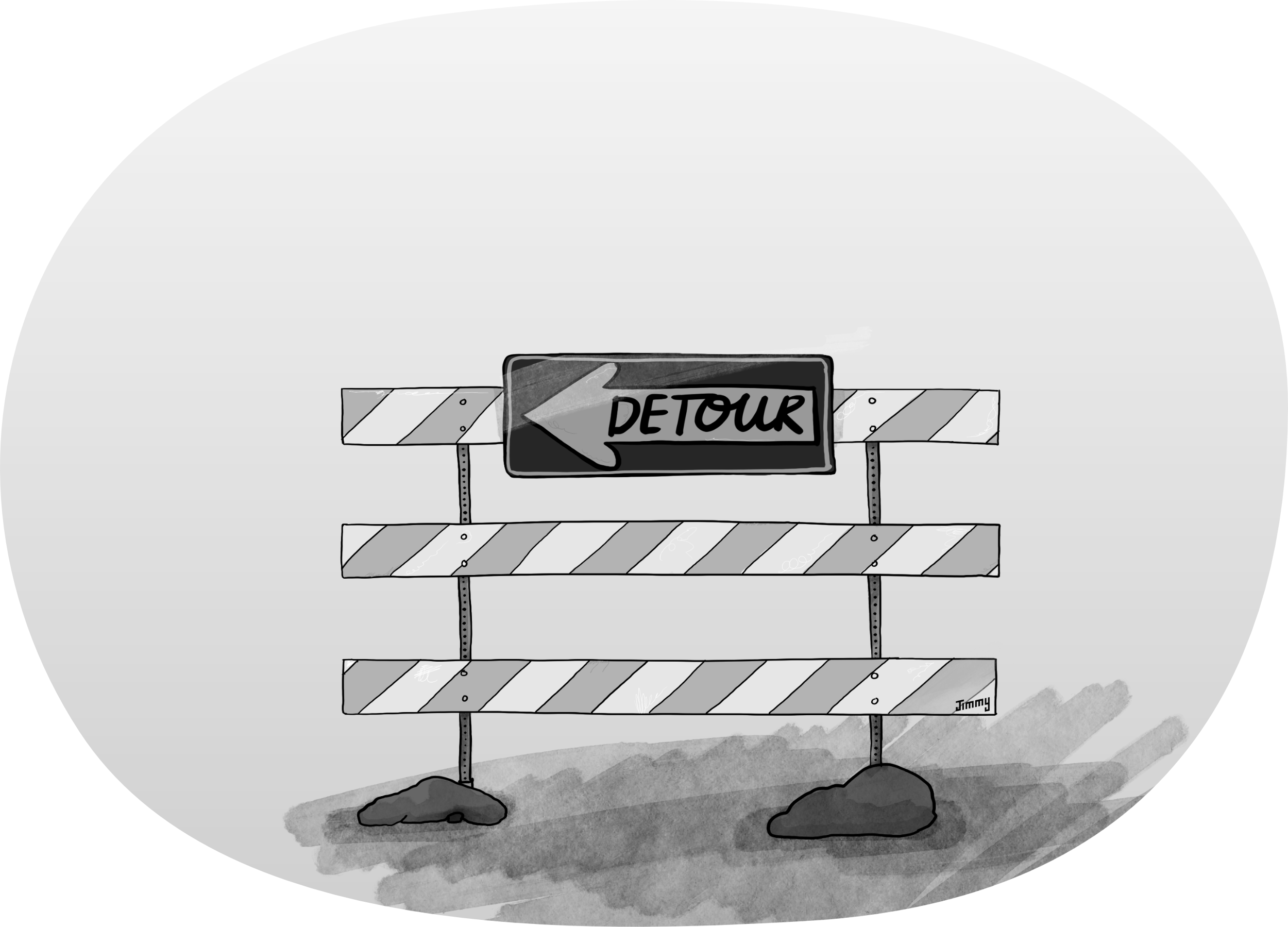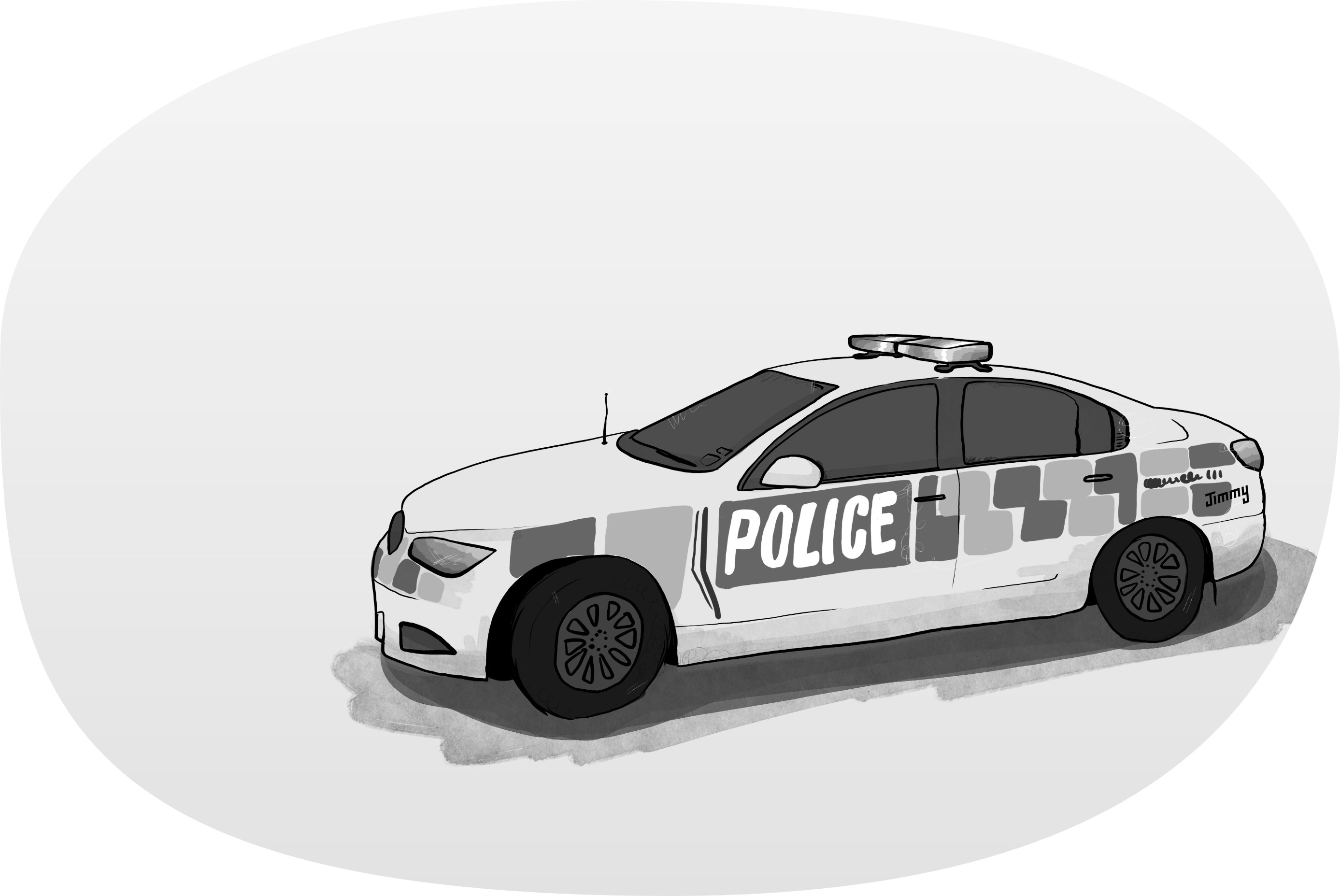BA(D) Modes: When Business Modes Are Distinctly Unhelpful

A year ago I moved from one team to another in the same company. While my title remained the same (Senior Business Analyst), my day-to-day job changed wildly. And the stark differences between the two roles got me thinking about ways of working and BA process — a big topic to mull!
The result? An article, Introducing BA Modes, and a series of LinkedIn posts explaining the nine BA modes that I identified. But as I was writing up the BA modes, I became aware that something wasn’t quite right, although I couldn’t at first put my finger on what.
I eventually realised what was wrong after having a challenging interaction with a fellow BA. They weren’t acting in any of the BA modes. The exact opposite. Instead of being in Delivery Mode as I expected them to be, they were in Obstruction Mode.
The truth is that Business Analysts don’t always operate in ways that are helpful to the team, project, or organisation. I figure that if I am promoting Business Analysts, then I have to do that honestly. I have to address the times that we are not helpful.
We have BA(D) Modes! ❌ 🔫 ☠️ 🏴☠️
This is part two!
This is an extension to my previous article Introducing BA Modes. Each BA(D) Mode as a much more helpful twin. I've linked each mode below to it's more useful partner!
When we are less excellent
What's a BA(D) Mode?
It is simply when we are doing the opposite of what we should be doing. It is when we’re slowing things, rather than speeding them up. When we build a tower of paperwork, rather than building understanding. When we get in the way.
Here’s the full list of BA(D) Modes
- Paralysis Mode
- Receptionist Mode
- Presumption Mode
- Fantasy Mode
- Obstruction Mode
- Enforcement Mode
- Dictate Mode
- Spin Mode
- Panic Mode
I want to dig into each in turn but — as with any good, clean fun — some explainers first!
- BA(D) Modes are not individual to a BA role or job; a BA might fall into many different BA(D) Modes over the course of an engagement.
- Behaviours might be more common in particular BA(D) Modes, but are not exclusive to a mode.
- In general, a piece of work will expect you to operate in a particular mode, so its evil twin BA(D) Mode is more likely than other BA(D) Modes to be the trap a BA falls into.
In short, BA(D) Modes are just a way to label and discuss some common Business Analyst anti-patterns.
But enough preamble, let’s dive in!
Paralysis Mode 🪼
Most Business Analysts have experienced Paralysis Mode at some point! It’s a horrible feeling. 🪼

You know your job is to understand what’s happening so that you can help the business to make good decisions. But you’re stuck! Sometimes it’s caused by a huge task that overwhelms you! Where even to start? You need more background detail, no?
Other times, it’s caused by a complex problem not having a simple answer. So you start scoping and re-scoping your options with different combinations in the futile effort to find the optimal one. You’re in a downward spiral. You’re down a rabbit hole.
At still other times, it’s the result of pulling a single thread and ending up in an entirely different part of the business (and well outside your scope). It is too big, too complex, or too entangled, and you’re not actually progressing.
It can happen to anyone, and I’m no exception. But over the years I’ve gotten better at recognising when I’ve fallen into Paralysis Mode — and because of that — better at breaking myself out.
What helps?
- Talking the issue through with someone
- Doing something wildly different
- Prioritising your tasks by value
- Revisiting the brief
- Sleeping on it!
- A good vent!
- Snacks!
The really scary thing is that Paralysis Mode can look like productive Analysis Mode! You can even rationalise your activities as being necessary to understand the whole!
But deep down, we know the truth.
Receptionist Mode 🛎️
Receptionist Mode is tricky. It can look friendly, engaged, and busy … but that’s just on the surface. 🛎️
A Business Analyst in Receptionist Mode fills their time with:

- Polishing Jira tickets
- Arranging team catch-ups
- Generating documentation
- Managing the team calendar
- Documenting meeting minutes
- Formatting presentations & files
- Ferrying information back and forth
- Doing other small admin odds-and-ends …
And of course chatting and coffee.
A Business Analyst in Receptionist Mode might be as busy as a bee, but they’re not adding business analysis value to the team. They’re simply doing what they’re told to do, and ONLY what they’re told to do. Which is to say, Receptionist Mode is a far cry from true business analysis.
At worst, Receptionist Mode simply creates more and more useless documentation and process for others to navigate without ever getting to the core issues the team is facing. But, Receptionist Mode is not entirely worthless! Many Business Analysts (myself included) started our BA careers in this mode.
Which makes sense!
Before we can understand how to add business analysis value to a team, we often first have to follow instructions and advice from people who know better than we do. Following instructions only becomes a problem if we fail to learn (and evolve to use) the other positive modes.
Staying in Receptionist Mode might become increasingly difficult in the near future. All the things that a BA in Receptionist Mode can do well, AI can do pretty well too. If you’re stuck here, you might find yourself easily replaceable.
And if you are stuck, some advice: Look for ways to change how can I help?
into how WILL this help?
.
Because while there is always value in taking the admin load off a colleague, being in Receptionist Mode doesn’t actually help the team long term!
Well, not as much as Documentation Mode would!
Presumption Mode 📌
We Business Analysts are like detectives. We hunt down the truth, question everything, and work to identify the root cause of issues. But also sometimes we don’t. 📌
Presumption Mode is Investigation Mode’s evil twin. We slip into Presumption Mode when we don’t question or do any real investigation. A BA in Presumption Mode is an order taker, not applying critical thinking to their inputs and outputs.

And because fact finding and exploring-all-of-the-options is such a fundamental part of the Business Analyst role, it’s is often assumed that we’ve done the due diligence even if we haven’t. Which is one of the reasons why it is so damaging when we don’t.
There are two ways we can fall in the Presumption Mode trap:
- We take something someone says as fact without questioning or verifying it
- We jump to a conclusion without corroborating evidence
Working with assumptions is like cooking with poisonous mushrooms. It doesn’t matter how well balanced the flavours are in the dish, the outcome will not be what we hope it will be!
The good news is that getting yourself out of Presumption Mode isn’t hard — it just takes practice. Slowing down and practicing self-awareness is key. Some questions to help you reflect on your work:
- What do you actually know?
- Who haven’t you spoken to yet?
- What information might be wrong?
- How can you prove your conclusions?
- Are you overly attached to an answer?
Asking these questions will help you to reflect honestly on your work and to identify any hidden assumptions! Once you’ve identified a gap, then you can find a way to close it.
But it’s also worth remembering that it is okay to make mistakes — you are human after all! We have all let an assumption slip by us without us picking up on it. If you wanted reassurance of my fallibility, just last week I missed an assumption and only managed to identify it at the last minute (luckily) before it had wasted development effort!
I’m not beating myself up over it, but I will continue to work to avoid falling into Presumption Mode as much as I can.
Fantasy Mode 🔮
Unless you’re paying attention, it can be tough to spot that a Business Analyst is operating in Fantasy Mode! 🔮
That is, until you try to execute on the information. Then you’ll uncover all manner of things that you didn’t know. Because a Business Analyst in Fantasy Mode hasn’t been analysing or thinking strategically. They’ve been dreaming!

Instead of doing a deep dive into customer and operational problems, they might draft objectives — even when they don’t have the data or research to back it up.
Rather than identifying areas of optimisation based on analysis, they might outline an exciting new opportunity — and fail to highlight the cost or the risks.
In lieu of establishing a rigorous plan, they might sell a easy step-by-step one that doesn’t account for the complexity of the situation, the existing tech, and the realities on the ground. And in place of engaging in conversations about the things that really matter, they might just make a pretty presentation.
In Fantasy Mode, a Business Analyst’s work lacks analytical substance. Which is scary because organisations rely on Business Analysts to be the internal consultant in Strategy Mode — helping them to make sensible decisions about things both big and small!
The role of a Business Analyst is to ensure that options are fully vetted so the business can make informed decisions about the future that they want to create. And if we’re making up the information associated with our advice or our recommendations, then we’re likely to steer them wrong.
But not all Fantasy Mode is nefarious!
Slipping into Fantasy Mode can be as simple as being given an insane deadline for a piece of work that requires a huge amount of analysis to do well. You’ve been told you have to present SOMETHING. You don’t have the option of pushing back on the deadline so you simply follow the instructions.
Sometimes that is just the reality of the situation.
The trick is, you should always be honest with yourself about the rigour of your work.
And if you are always in Fantasy Mode by necessity in your role, then your role isn’t a Business Analyst role, it’s something else …
Obstruction Mode 🚧

🚧 Obstruction Mode is the opposite of Delivery Mode.
Instead of enabling the team to move quickly, a Business Analyst in Obstruction Mode slows down both the process and the flow of work, information, and delivery. In Obstruction Mode, a Business Analyst:
- Works in isolation
- Is territorial about analysis
- Fixates on measuring velocity
- Takes copious — private — notes
- Doesn’t take the team to SME meetings
- Writes tickets without input from the team
- Implements complicated sign-off processes
- Interrupts the developers and breaks their concentration
Or perhaps the most officious and quietly obstructive … instead of a quick chat to clarify an issue, books a meeting the following week.
The result? The flow of work is interrupted, things take longer, team members are distracted, and productivity is slashed. Booo!
Now there’s a skill to balancing the needs of the team to focus and get stuff done with managing work and requests coming down the pipeline. It is honestly quite hard to get this right — and far too easy to get it wrong.
So how do you know if you’re hitting the mark?
Every team is different, and the situation you’re in is different, so unfortunately there’s no one-size-fits-all answer. But, there’s a hum
in the air when you’ve dialled it in. The key is framing your Business Analyst role as an enabler, rather than aa a mini-manager for the team. The team is how value is delivered. The more we can do to make them move fast, solve problems, and get stuff done, the better!
Enforcement Mode 🚓

Business analysts in Enforcement Mode have nominated themselves as law and order for the team. 🚓
Instead of saying oh, we missed X, how did that happen and what can we do about it?
they say YOU didn’t do X.
For a Business Analyst in Enforcement Mode:
- Rules are strict!
- Attendance is monitored
- Processes MUST be followed!
- All actions require endorsement
- Everything requires a formal meeting
- Deviations from the rules are unacceptable
- Discussions should only happen at designated events
- Off-topic conversations, even if helpful, are objectionable
Everything is tracked and the PROCESS trumps the actual work.
Of course, I’m exaggerating. Very few BAs are this extreme, but the tendency is there. We do like clarifying rules and processes, and it can be deeply frustrating for a clearly-defined and agreed-upon procedure to be ignored!
Sometimes that process is there to reduce risk. But most of the time, it’s just a way of working designed to help the team to work efficiently. Not quite a case of life or death. Yet, sometimes when organisational reputation or production systems are under threat, it FEELS like it’s life or death! Especially if you’re deeply involved in your work. And if people are flouting the rules and increasing the collective risk, well, that only amplifies the BA’s frustration!
But, frustration isn’t a sustainable approach to work!
So how to get out?
- Find someone who can
REAL TALK
your processes. - Identify the true risks to the team. I’m talking massive consequences, panic, bedlam etc etc.
- Work out which processes are helping to address these very real risks.
- Focus your attention on making sure the processes that address your real risk are rock solid.
And for all the remaining processes … they’re just there to help you work fast and are subject to review and improvement. Maybe loosening them up a bit could help you move faster?
It is likely that Facilitation Mode will be more effective.
Dictate Mode 🔨
We don’t often admit it, but we Business Analysts can find ourselves in Dictate Mode. 🔨
Dictate Mode can be overt, but it also can be sneaky.
The big and bold version of Dictate Mode is when the Business Analyst usurps the role of the product owner and actively makes decisions about the direction to take and what’s next. This typically doesn’t last long because it is usually obvious that they’re not playing their part.

But the second type of Dictate Mode is much sneakier and far more common. In sneaky Dictate Mode the Business Analyst makes decisions in quiet ways.
- Presenting ideas as orders from above
- Excluding options from consideration
- Overstating risks to steer decisions
- Speaking on behalf of others
- Not seeking critical feedback
- Misrepresenting information
- Controlling the narrative
- Speaking over people
- Not escalating issues
- Keeping secrets
These actions might not seem like decisions, but in practice, they are. They all constrain the possible outcomes, prevent the team from coming up with the best solution, and ultimately undermine the product.
The very opposite outcome than that which good Business Analysts deliver when working in Design Mode.
The Business Analyst role is advisory. We have a huge part to play in enabling good decisions — decisions backed by data with all the options analysed. And failing to do that, well, what’s the point?
We don’t often talk about how much power we Business Analysts have over getting stuff done. But we have plenty of influence. BAs are relied upon to increase the transparency of the getting-stuff-done process. This is why I think that Dictate Mode is perhaps the most insidious of all the BA(D) modes. It’s fundamentally counter to the purpose and value of the role.
So if you’ve ended up here, it’s probably time to look for another role.
Spin Mode 📰

Communication Mode focuses on surfacing the right information so that everyone is informed and aware of what’s happening. Spin Mode is the opposite of that. In Spin Mode we obfuscate the truth. 📰
A Business Analyst in Spin Mode:
- Tells happy stories
- Focuses on the glitter
- Selectively chooses data
- Avoids sharing any bad news
- Shares incomplete information
- Selects a narrative that looks the best
Spin Mode isn’t about making sure the recipient has the information that they need to understand, but rather on making the situation look good. Which often means putting lipstick on a pig.
Spin Mode can look just like the real thing. I mean, why wouldn’t you trust the information you’re getting from the BA? The BA is saying that everything is on track! It might work for a while, but lipstick wears off eventually. And when it does, people are usually unhappy that they’ve been kissing a pig!
The tricky thing about Spin Mode is that it is most commonly motivated by good intent. Trying to protect the team from unnecessary noise — or attempting to keep a powerful stakeholder on side — can drive you to spin the truth a tad.
In the best case scenario, Spin Mode simply means slower responses to emerging information. But in the worst case, it means big decisions are being made on false information and lack of understanding of the stakes and risk. It’s one thing to make sure that stakeholders know about the hard work you and your team are doing, but quite another to hide facts from them.
So how do you check that you’re not in Spin Mode? Ask yourself:
- Do my stakeholders understand the current risk profile?
- Does everyone have all the info they need?
- Can I back up what I’m saying?
And if the answer is no
, then spend some time in Communication Mode instead. 📱
Panic Mode 🔥
Panic Mode is exactly what it sounds like it is: You’re in a PANIC!
In Panic Mode, everything is life or death, everything is dire, everything is severity one, everything needs a war-room, everything needs a hero. In other words, EVERYTHING. IS. ON. FIRE!
Or at least, it feels like everything is on fire!
A Business Analyst in full blown Panic Mode is likely to:

- Have a short fuse
- Behave irrationally
- Cut process corners
- Overstate the impacts
- Escalate every minor issue
- Treat everything as dangerous
- Categorise everything as a red flag
- Respond to new information with fear
The healthy version of this is Crisis Mode. In Crisis Mode you switch gears to respond to the bad situation and get things back on track. Crisis Mode SHOULD be temporary.
But if you have been operating in Crisis Mode for too long, it becomes easy to think every small thing is a crisis. Even small deviations that should be entirely expected in BAU become a problem! The truth is, Crisis Mode isn’t sustainable for long periods of time. It’s high stress, high stakes, and it takes a toll. And if you’re not careful, you can end up in Panic Mode: the irrational, emotional, fight-or-flight sister-mode to Crisis Mode.
But the worst part of Panic Mode is that it can snowball.
Once one person is in a panic, the energy spreads and soon everyone is stressed and panicked!
So how do you stop yourself from panicking? Well that’s different for everyone. But here are some tips for when you’re feeling worried and getting wound up:
- Talk the issue through with someone you trust
- Take a step back and look at the big picture
- Make sure you’re taking care of you
- Take a break, a breather, or a walk
- Sleep on it before escalating
Or if you are already high energy, have a good vent to someone you trust (and then do all of the above)!
Final words
That’s it — we are officially done with BA Modes and BA(D) Modes!
This has probably been my favourite (and random) non-work exercise to date! Big thanks to everyone who shared their thoughts on these modes via email, or on LinkedIn while I was posting about this. It was incredibly helpful and I hope you see your suggestions reflected in the thinks.
Last updated .